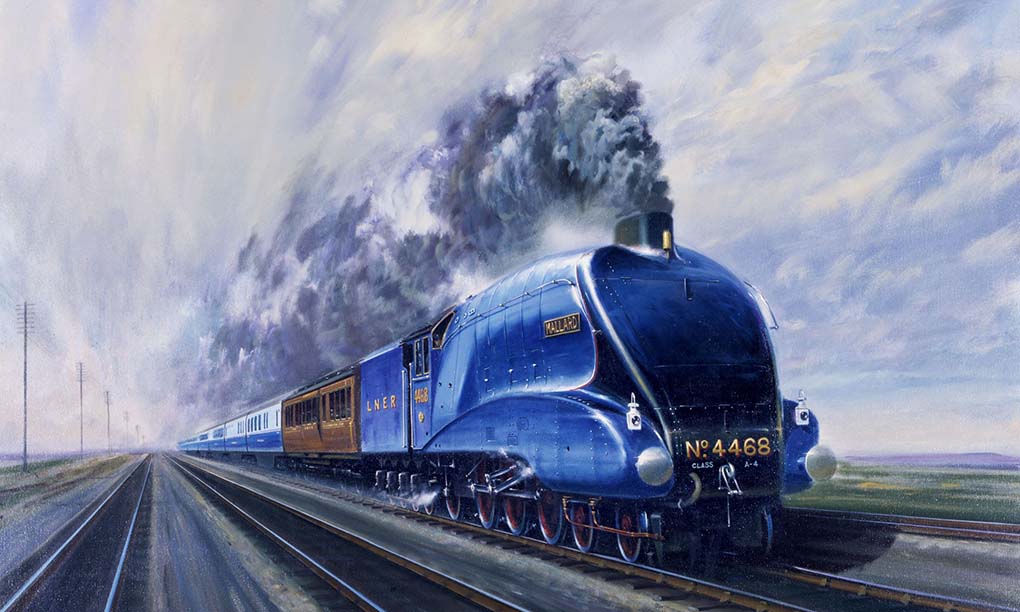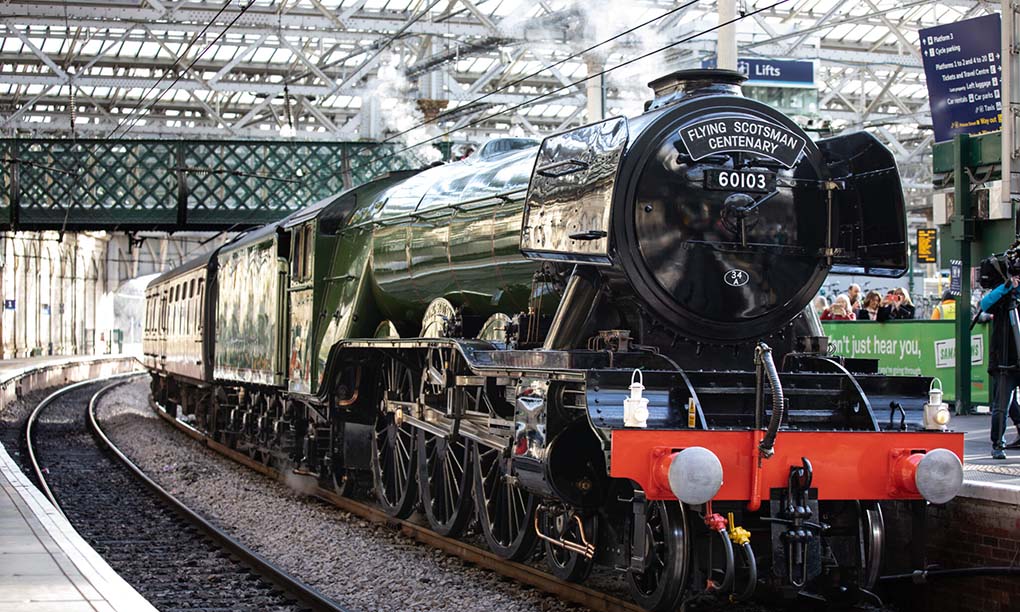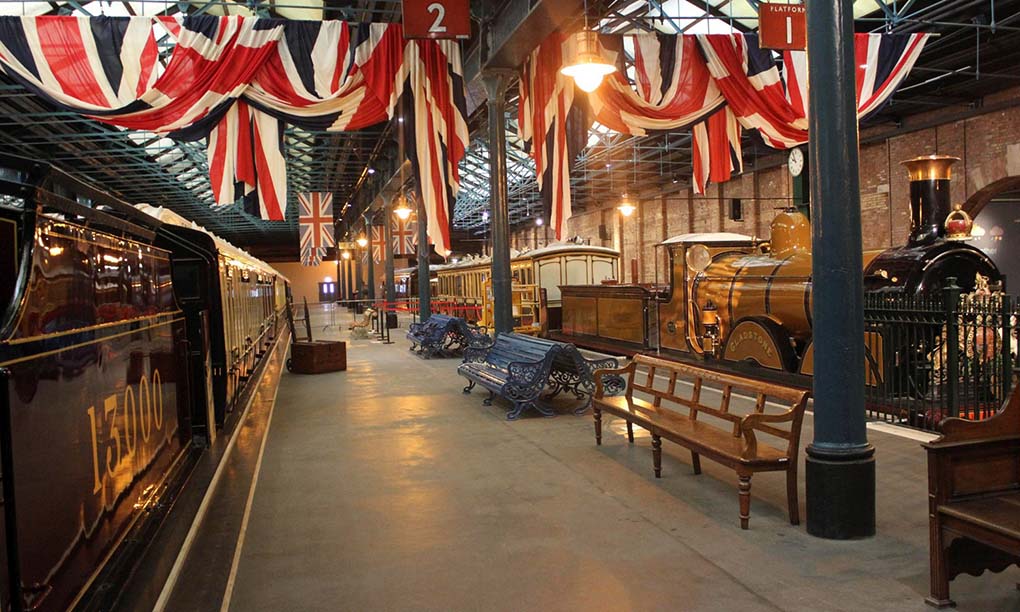The charm of a time machine comes to life at the National Railway Museum in York. My exploration of this captivating institution revealed my personal favorites and recommended exhibits that collectively narrate the story of railways.
Location:
The National Railway Museum is strategically situated at Leeman Road, York YO26 4XJ, United Kingdom, right next to York Railway Station.
Getting There:
A leisurely stroll from York Railway Station offers a preview of historic locomotives, setting the tone for the museum experience. Those opting for private transportation will find ample parking facilities in the vicinity.
Admission and Ticket Information:
One of the museum’s most remarkable features is its free entry, providing unfettered access to a treasure trove of railway history. While the general entry is complimentary, it’s essential to note that special exhibitions or events may have separate ticket prices. Regularly checking the museum’s official website for updates on such events is advisable for a comprehensive and well-informed visit.
My Personal Favorites:
The Mallard: Speeding Through History
As I approached the exhibit featuring The Mallard, I couldn’t help but feel a sense of awe at the sight of this iconic A4 class locomotive. Its distinctive blue livery immediately caught my attention, and I knew I was in for a treat. The Mallard, a legend in the world of steam locomotives, proudly holds the world record for being the fastest of its kind.

The exhibit goes beyond the locomotive’s impressive speed; it provides a captivating journey into the engineering marvel that defines this symbol of British rail history. Detailed explanations and interactive displays accompany the locomotive, offering insights into the technological advancements of its time. It’s not just a record-breaker; it’s a living testament to the innovation and craftsmanship that shaped an era of railway excellence. As I explored the exhibit, I couldn’t help but appreciate the meticulous preservation of The Mallard, allowing visitors like me to step back in time and witness the golden age of steam locomotion.
Flying Scotsman: A Living Legend
Stepping into the presence of the legendary Flying Scotsman felt akin to meeting a celebrity in the world of railways. The locomotive’s green and black livery, with its iconic design, exuded a timeless elegance that immediately captured my attention. The exhibit surrounding the Flying Scotsman promised a journey through time, and it did not disappoint.
The comprehensive insight provided by the exhibit allowed me to delve into the life of this historic locomotive. From its inaugural journey in 1923, where it became the first steam locomotive to reach 100 miles per hour, to its subsequent restoration and continued legacy, the story of the Flying Scotsman unfolded before my eyes. Detailed displays showcased the intricate engineering that made this locomotive a marvel of its era. The exhibit wasn’t just about the locomotive itself; it was a narrative of the people, innovations, and milestones that shaped the remarkable journey of the Flying Scotsman. As I admired the elegance and grandeur of this living legend, I couldn’t help but appreciate the museum’s dedication to preserving and presenting the rich history of railway travel.
Station Hall: A Journey Through Eras
Entering Station Hall within the museum was akin to stepping into a vast treasure trove of railway history. The expansive display area unfolded a mesmerizing journey through the evolution of railways, presenting a captivating sensory experience that encapsulated the essence of each historical period.
The diversity of exhibits within Station Hall was truly remarkable. Opulent royal carriages stood as eloquent reminders of an era when train travel was synonymous with luxury and grandeur. The intricate details and craftsmanship of these carriages transported me back to a time when rail journeys were a symbol of refined elegance.
Moving through the hall, the atmosphere transformed as vintage steam engines, each with its unique character, took center stage. The gritty, robust machines were a testament to the industrial revolution and the pivotal role played by steam power in shaping the early days of railways. The sensory immersion was complete, with the unmistakable scents of coal and steam adding authenticity to the experience.
What made Station Hall exceptional was its ability to seamlessly transition between these different eras. The exhibits were not merely static displays; they were dynamic storytellers, narrating the evolution of railway travel. The well-curated collection and the immersive design of Station Hall made it a highlight of my visit, allowing me to appreciate the profound impact of railways on society and travel over the years.
Recommendations:
The Works: Unveiling Railway Engineering
“The Works” stands as a dynamic and interactive exhibit within the National Railway Museum, providing visitors with an exclusive behind-the-scenes look at the intricate world of railway engineering. This engaging showcase encompasses workshops, interactive displays, and hands-on experiences, offering a comprehensive understanding of the meticulous processes involved in maintaining and restoring these mechanical marvels.
As I ventured into “The Works,” the first thing that struck me was the immersive atmosphere. The exhibit wasn’t just a static display; it was a living, breathing hub of railway craftsmanship. The workshops, complete with authentic tools and machinery, provided a tangible connection to the daily activities of skilled engineers who dedicate themselves to preserving the heritage of these locomotives.
One of the highlights of “The Works” was its emphasis on interactivity. Visitors, myself included, had the opportunity to engage in hands-on experiences, gaining insights into the various aspects of railway engineering. From understanding the complexities of engine maintenance to exploring the art of meticulous restoration, each interactive display was both educational and entertaining.
The exhibit also cleverly integrated multimedia elements, such as informative videos and interactive touchscreen displays. These features further enriched the visitor experience by offering in-depth explanations of engineering processes and historical contexts. It was evident that “The Works” was designed not only to showcase the final results of engineering efforts but also to demystify the craftsmanship behind these colossal machines.
Future Engineers: Inspiring the Next Generation
The “Future Engineers” exhibit at the National Railway Museum serves as a captivating initiative designed to introduce the principles of engineering to visitors, particularly aiming to inspire the next generation of enthusiasts. Through a series of engaging displays and hands-on activities, this exhibit successfully nurtures curiosity and lays the essential groundwork for the budding engineers and railway aficionados of tomorrow.
As I explored the “Future Engineers” exhibit, I was immediately struck by its thoughtful curation. The displays were not only visually appealing but also ingeniously designed to communicate complex engineering concepts in an accessible manner. Interactive stations invited visitors, particularly young ones, to experiment with various elements, fostering a sense of exploration and discovery.

The exhibit’s emphasis on hands-on activities was commendable. It created an immersive learning environment where children and adolescents could actively participate in simple engineering tasks, providing a tangible understanding of the fundamental principles that govern the functioning of railways. From assembling miniature train components to experimenting with basic mechanics, the activities were tailored to be both educational and enjoyable.
What set “Future Engineers” apart was its ability to seamlessly blend education with inspiration. Throughout the exhibit, there were profiles and stories of real-life engineers who had made significant contributions to the railway industry. These narratives added a human touch, showcasing the impact that passionate individuals can have on shaping the future of engineering.
Furthermore, the exhibit successfully leveraged technology to enhance the learning experience. Interactive screens and multimedia presentations provided additional layers of information, ensuring that visitors could delve as deeply as they desired into the world of engineering. The integration of modern educational techniques was particularly effective in capturing the attention of younger visitors.
Locomotion: Exploring Innovation
The “Locomotion” exhibit at the National Railway Museum stands as a testament to the fascinating evolution of locomotives, offering visitors a comprehensive overview of the technological advancements that have profoundly shaped the railway industry.
As one delves into the exhibit, a chronological journey unfolds, beginning with the early days of steam-powered locomotives. The exhibit meticulously displays the intricate mechanisms of these historic engines, allowing enthusiasts and curious visitors alike to appreciate the engineering marvels that marked the inception of rail travel.
Moving through the different eras of rail transport, “Locomotion” seamlessly transitions to showcase the evolution from steam to diesel and, eventually, to modern electric trains. The carefully curated collection of locomotives provides a visual narrative of the technological progress that revolutionized the efficiency, speed, and environmental impact of rail transportation.
The exhibit succeeds not only in presenting the physical transformation of locomotives but also in contextualizing these changes within the broader historical and industrial landscape. Informational panels, vivid graphics, and multimedia presentations accompany each locomotive, offering insights into the economic, social, and environmental factors that influenced the development of railway technology.
What sets “Locomotion” apart is its emphasis on interactivity. While some exhibits may focus solely on static displays, this particular showcase allows visitors to engage with certain elements. Interactive consoles provide in-depth information about the inner workings of different locomotives, fostering a deeper understanding of the engineering principles at play.
Moreover, the exhibit pays homage to groundbreaking innovations and the pioneers behind them. Brief biographies and anecdotes add a human touch to the display, honoring the individuals who played pivotal roles in advancing locomotive technology.
Railway Museum Library: Delving into Archives
The Railway Museum Library stands as a hidden gem within the National Railway Museum, catering to enthusiasts and scholars alike who seek in-depth knowledge and a deeper understanding of railway history. This repository of information is a testament to the museum’s commitment to preserving and disseminating the rich heritage of the railway industry.
Situated within the museum premises, the library is more than just a collection of books; it is a curated archive that encompasses a diverse range of resources. Enthusiasts, historians, and researchers have the opportunity to explore a wealth of documents, rare publications, and archives that span various periods and aspects of railway development.
The library’s collection is carefully organized, allowing visitors to navigate through the extensive shelves with ease. The diverse range of materials includes historical accounts, technical manuals, engineering blueprints, and even personal narratives from individuals who played key roles in the railway’s evolution.
One of the notable features of the Railway Museum Library is its accessibility to both casual visitors and serious researchers. While enthusiasts can browse through visually engaging displays that highlight key moments in railway history, scholars can request access to the more specialized sections of the library for in-depth research.
The ambiance of the library adds to the overall experience. It provides a quiet and contemplative space, allowing visitors to immerse themselves in the world of railways without distractions. Comfortable seating and well-lit reading areas contribute to an environment conducive to both casual reading and focused study.
Moreover, the library staff plays a crucial role in enhancing the visitor experience. Knowledgeable and approachable, they are available to assist with inquiries, guide researchers to specific resources, and offer insights into the significance of certain documents or artifacts.
Pros:
- Free Admission: The museum’s free entry makes it an inclusive and accessible destination.
- Educational Programs: The museum offers educational programs for schools and groups, fostering an understanding of railway history among the younger generation.
- Cafes and Shops: Cafes and shops within the museum premises provide opportunities to relax and purchase railway-themed memorabilia.
Cons:
- Crowded During Peak Times: Given its popularity, the museum can get crowded during weekends and holidays, impacting the overall experience.
Exploring the National Railway Museum was akin to traversing a timeline where each locomotive and exhibit represented a chapter in the grand story of railways. The immersive experience, coupled with the museum’s commitment to preserving and sharing this history, left an indelible mark.
Booking Platform:
As the National Railway Museum offers free admission, there is no need for advanced booking. Visitors can simply arrive and enjoy the exhibits. For special events or exhibitions with separate ticket prices, the museum’s official website is the recommended platform for reservations.
The National Railway Museum in York transcends the conventional notion of a mere collection of trains; it stands as a living testament to the profound technological, cultural, and social impact that railways have had on human history. More than just a repository of locomotives, the museum serves as an immersive experience that captures the essence of an industry that has shaped societies and connected distant landscapes.
The museum’s exhibits go beyond the surface level of showcasing trains; they delve into the intricacies of railway technology. From the early steam engines that revolutionized transportation to the sleek, high-speed trains of the modern era, each exhibit provides a glimpse into the evolution of railway engineering. The meticulously preserved locomotives, coupled with interactive displays, allow visitors to appreciate the engineering marvels that have defined different epochs of railway history.
Beyond the technical aspects, the museum weaves a narrative that reflects the cultural and social dimensions of the railway industry. Exhibits highlight the role of trains in shaping urbanization, trade, and travel patterns. The impact of railways on daily life, from the transformation of commuting to the role of trains during wartime, is vividly presented. Engaging displays and multimedia presentations bring to life the stories of the people who worked on the railways and those whose lives were influenced by this mode of transportation.
What sets the National Railway Museum apart is its commitment to providing an inclusive experience. Whether you are a seasoned rail enthusiast with an in-depth understanding of locomotive engineering or a casual visitor curious about the historical and cultural significance of trains, the museum caters to all levels of interest. The exhibits are thoughtfully curated to balance technical depth with accessibility, ensuring that everyone can appreciate the wonders of railway history.
The museum’s timeless appeal lies in its ability to transcend generational interests. It captures the imaginations of older visitors who may reminisce about the golden age of steam, while simultaneously sparking the curiosity of younger generations eager to understand the technological leaps of contemporary rail travel. The carefully preserved exhibits and ongoing efforts to update displays ensure that the National Railway Museum remains relevant and captivating across different eras.
Tags: Flying Scotsman, Station Hall, The Mallard